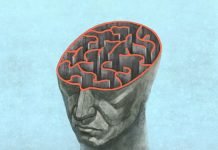
In a new study from the University of Nottingham, researchers have used MRI imaging to map visual brain activity in stroke survivors with sight loss that gives new hope for rehabilitation and recovery.
They found new insights by combining data from clinical sight tests with brain imaging to precisely map the areas of the brain affected by sight loss.
This allows the identification of visual brain areas where the function could potentially be improved with rehabilitation.
Visual field loss is a common and devastating complication of strokes. This type of sight loss, called hemianopia, affects one side of a person’s vision and is caused by damage to the visual pathway in the brain.
A visual field test called perimetry is the current gold standard for measuring residual visual field coverage.
However it has limitations. Its coverage is often coarse, it requires good attentional engagement of participants, and provides only indirect information about where in the visual pathway the key processing deficit is located.
In the study, the team combined detailed perimetry and multiple brain imaging datasets from four-stroke survivors which shows that perimetry can be augmented with brain imaging data to provide a novel measure of residual visual field function.
This combined approach provides the potential for a personalized approach to therapy—guided by functional activity patterns in the post-stroke brain.
The research also showed that the same visual field loss can be caused by very different patterns of brain damage.
This highlights the need for individualized rehabilitation plans for stroke survivors.
The team says this important research gives new and much-needed hope for people experiencing sight loss due to brain injury after a stroke.
This work could truly be transformative in people’s recovery, helping to restore independence and improve the overall quality of life.
If you care about stroke, please read studies about combo therapy that could cut risk of heart attack and stroke by half, and supplements that could help prevent heart disease, stroke.
For more information about stroke, please see recent studies about why strokes harm women, men in different ways, and case showing that she couldn’t put up her arms on a roller coaster. A stroke followed.
The study is published in Frontiers in Neuroscience. One author of the study is Anthony Beh.
Copyright © 2022 Knowridge Science Report. All rights reserved.




